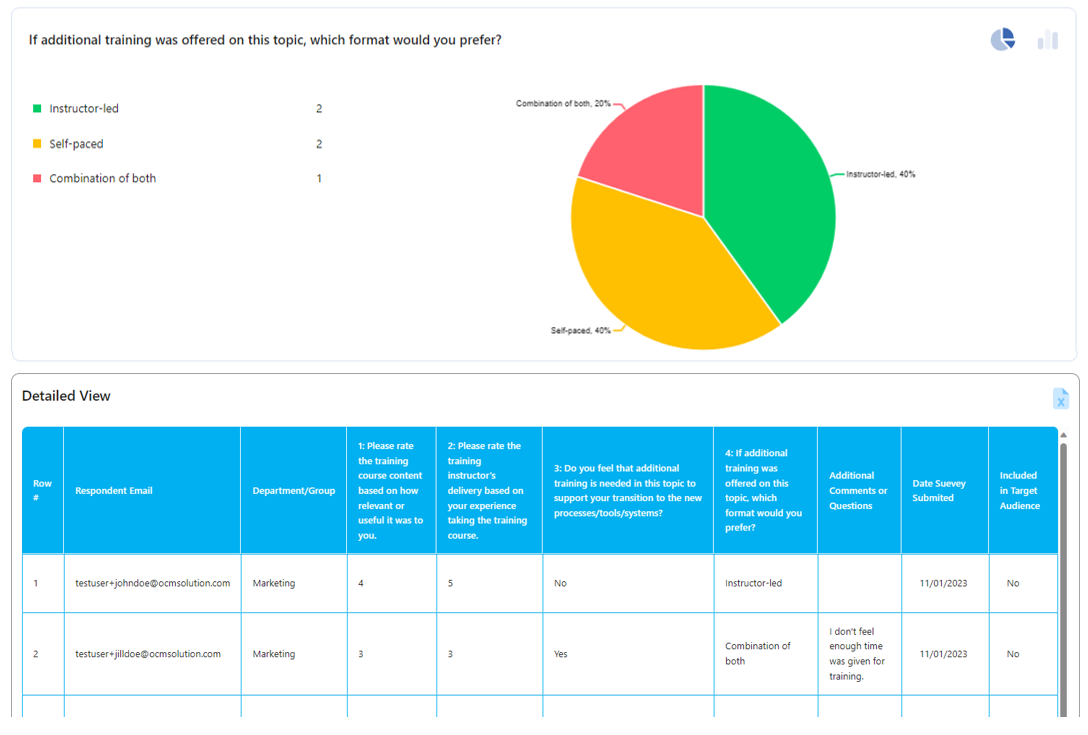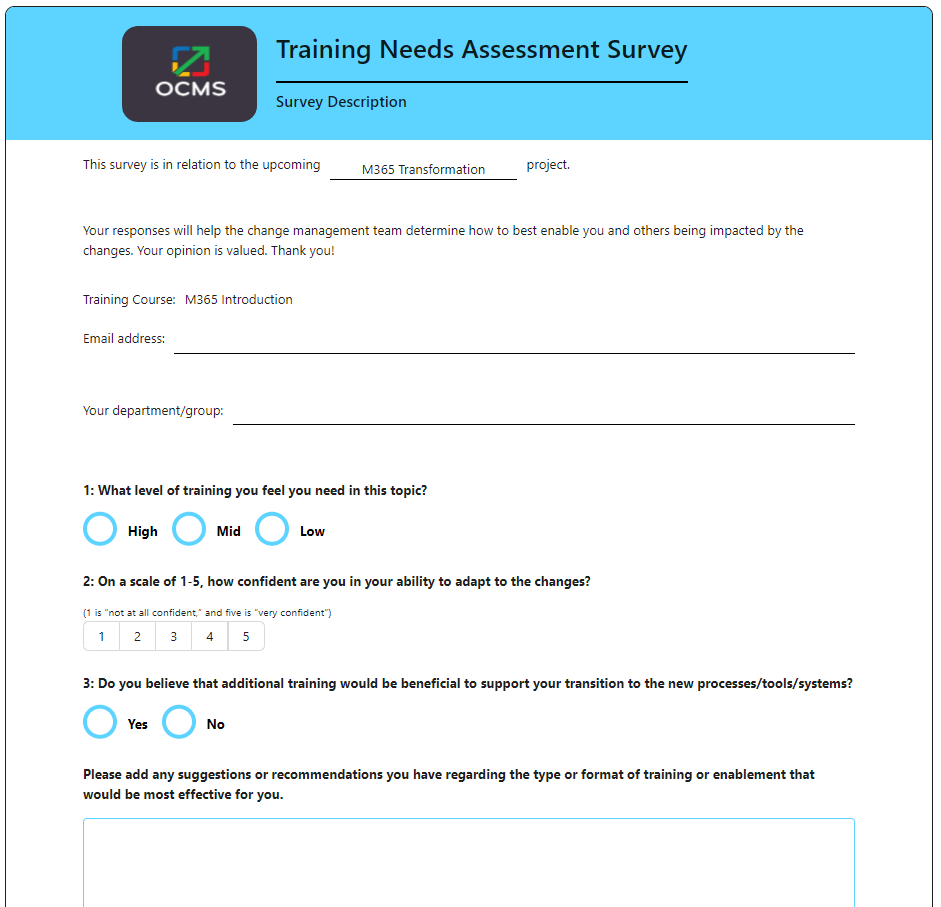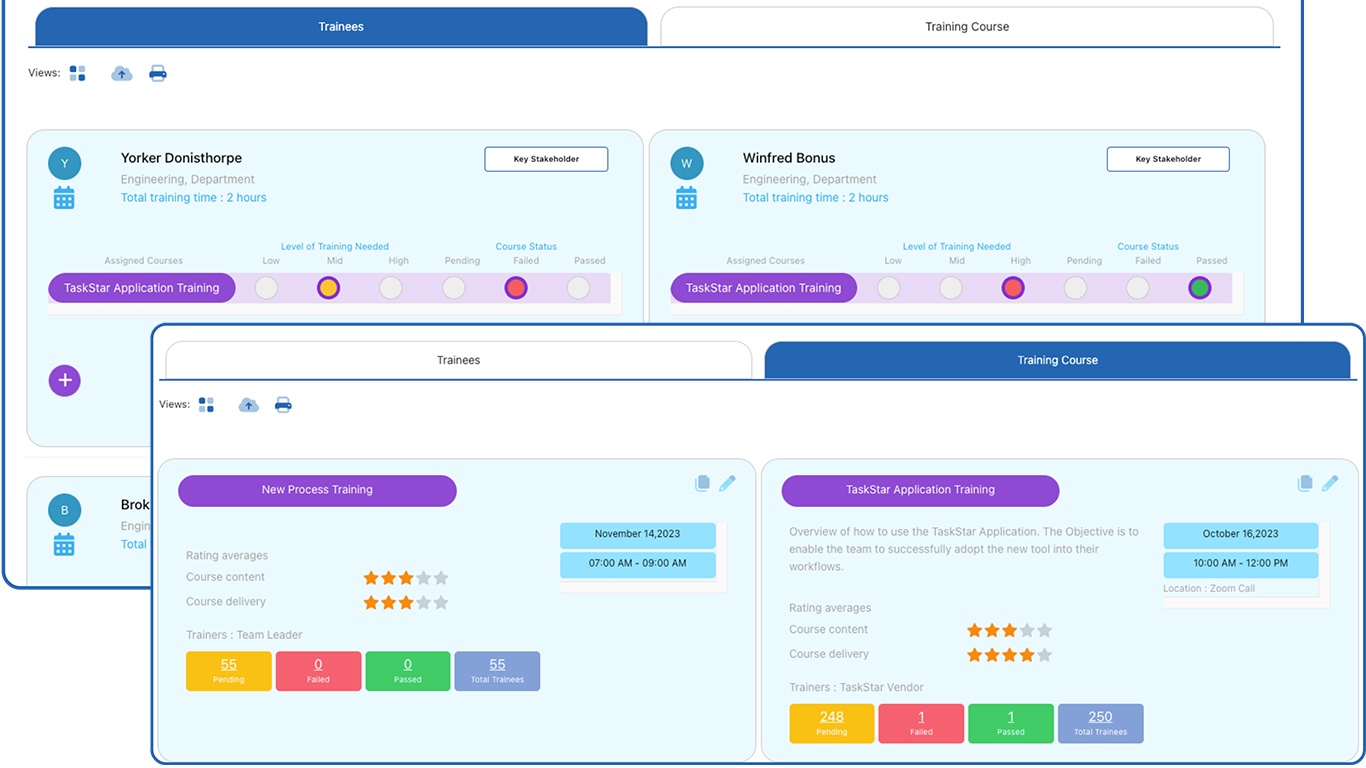Why Training Need Analysis is Important for Organizations & Projects
 TNA – Training Needs Assessment
TNA – Training Needs Assessment
Embarking on a training needs analysis is like shining a spotlight on the pathway to success within your organization. Imagine having the power to identify exactly what your team needs to boost their skills, enhance productivity, and achieve those brilliant goals you’ve set. That’s precisely what a training needs analysis can do for you.
A training needs assessment helps you understand, develop, and nurture your team’s full potential.
By taking a closer look at the knowledge gaps and skill deficiencies within your workforce, you’re not just filling voids; you’re laying down the foundation for a more knowledgeable, capable, and empowered team. Whether you’re aiming to implement a new project, improve customer satisfaction, or foster continuous growth, a training needs analysis is your secret weapon.
Check out a quick topic summary below. Keep reading for a more detailed discussion of why training need analysis is important.
Quick Summary
What is a Training Needs Analysis?
Training Needs Analysis (TNA), also known as training needs assessment, is a crucial process that identifies an organization or project’s objectives and the skills and knowledge employees require to achieve them.
It assesses the organization’s needs against team capabilities, aiming to bridge gaps through appropriate training programs. TNA ensures alignment between organizational goals and employee skills, facilitating the implementation of targeted training initiatives.
What’s the Purpose of Training Need Assessment?
The purpose of a training needs assessment is to ensure that employees, managers, end users, and external parties receive the necessary training to drive an organization’s success.
Decades of studies have shown that without adequate training, an organization cannot achieve optimal performance and profitability.
Recognizing the pivotal role of well-trained individuals, companies strive to enhance operations and projects by aligning employee training needs with organizational goals and project objectives through TNA, empowering their workforce with the essential knowledge and skills required for success.
What are the Benefits of Doing a Training Needs Analysis?
- Project Adoption Success: Training needs analysis ensures that employees, managers, and end users impacted by a new project can successfully adopt the changes, aligning their skills with project requirements and overall goals.
- Continuous Improvement: Organizations utilize training needs analysis to identify areas for efficiency and productivity growth. By pinpointing skills gaps, companies can provide targeted training, fostering continuous improvement strategies to enhance employee capabilities and overall performance.
- Correcting Organizational Problems: Training needs analysis is instrumental in identifying causes for declining performance indicators. For instance, increased customer complaints may stem from employee knowledge gaps. By addressing these issues through targeted training, organizations can correct problems.
- Ongoing Employee Development: At the individual level, training needs assessment identifies areas where employees can benefit from ongoing training and development. This personalized approach helps individuals acquire new skills, fostering professional growth.
Need a Good Tool for Training Needs Assessment & Training Management?
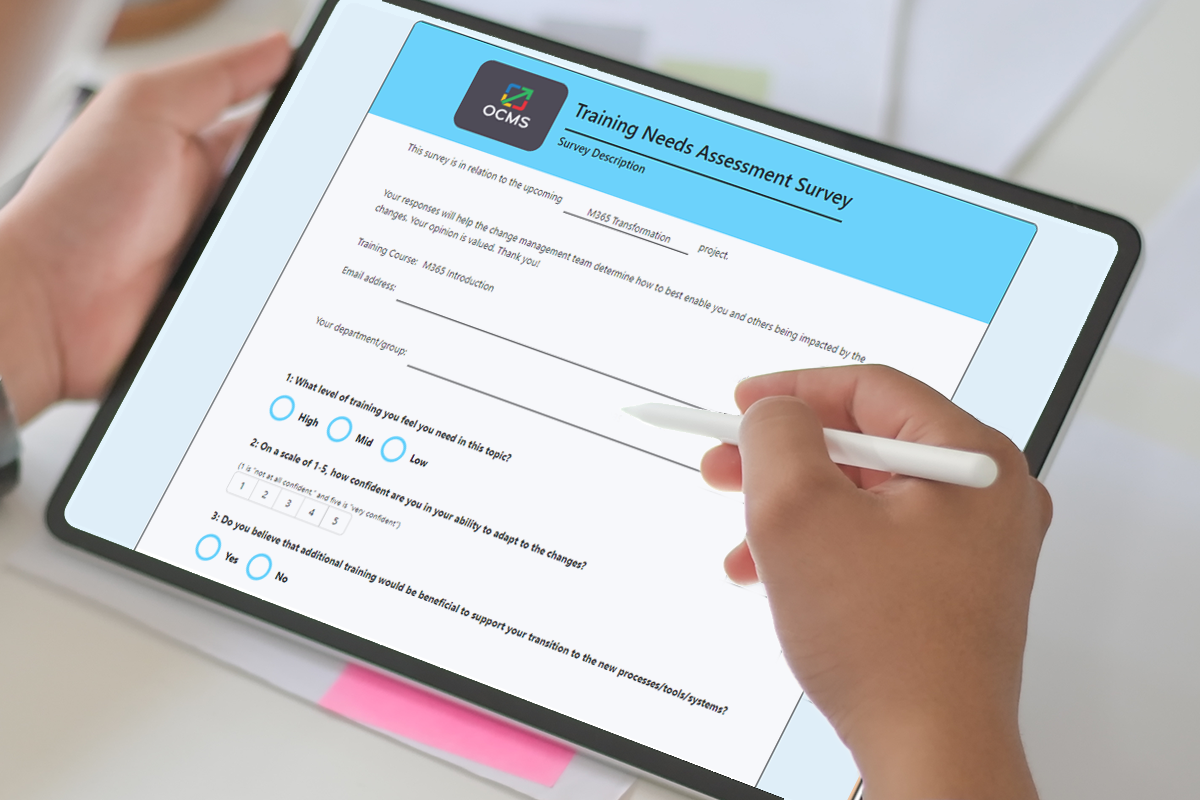
Introducing… OCMS Portal with a comprehensive training tool to assess needs, plan, and manage training. It has everything you need to deploy training needs analysis in your organization.
Training Needs Identification Methods
Identifying training needs is a vital aspect of the training needs assessment process, ensuring organizations meet their performance and success objectives. To comprehensively understand training needs and bridge existing skill gaps, various methods can be employed.
These include:
- Sending surveys to managers, employees, and other impacted end users
- Monitoring Business Key Performance Indicators (KPIs)
- Observation of daily workflow
- Employee skills testing and audit
Additionally, addressing frequently asked questions and recurring issues further informs the training needs analysis. Employing a combination of these methods ensures a thorough assessment of employee skills, enabling organizations to implement targeted training programs effectively.
Summary Conclusion – The Importance of Training Needs Analysis
Conducting a training needs analysis is an investment in your organization’s future. By identifying and addressing the specific areas where your team requires support, you’re not only ensuring their success but also fortifying the overall strength of your company and the success of change initiatives.
Empowered employees lead to enhanced productivity, better customer experiences, and a workplace culture of continuous improvement. So, as you embark on this journey of understanding and fulfilling your team’s training needs, remember that you’re not just shaping the present, but paving the way for a brighter, more prosperous tomorrow.
Detailed Deep Dive
The Purpose & Benefits of Training Needs Analysis
Based on decades of studies, when employees, managers, end users, and/or external parties are not provided with the right level of training, an organization will not achieve the right level of success.
The people in an organization drive how well the organization operates and how profitable it becomes, and they need to be educated and empowered with the right knowledge and skillset.
This is why companies continually seek to optimize operations and projects by analyzing employee training needs and matching those with organizational goals and project objectives. This is done through a training needs assessment (TNA).

In this overview of the importance of training needs assessment, we’ll highlight several training needs analysis benefits and answer the question, “What is the purpose of a training needs analysis.”
Read on to gain a better understanding of the benefits and purpose of training needs analysis for projects and organizations.
OCMS Portal with TNA Training Need Assessment Reporting
Get tools for training assessment, stakeholder assessment, change impacts reporting, and more. Start your free trial today for OCMS Portal to check out all the training management resources.
Table of Contents: TNA Training Need Assessment
Keep on scrolling down this page to read each section or click any link below to go directly to that section.
1. What is TNA Training Need Assessment?
2. What Is the Purpose of Training Needs Analysis?
3. The Importance of Training Needs Analysis for Effective Organizations & Projects
4. Training Need Identification Methods
5. 12 Training Needs Analysis Benefits
6. Tips for Conducting Training Needs Assessment
7. OCMS Portal’s Tool for Conducting Training Needs Assessment & Training Management
8. Conclusion – Why Training Need Assessment is Important
9. FAQ | The Importance of Training Needs Analysis
The purpose of training need assessment will vary according to many factors. These factors can include projects that the company is undertaking, recent reporting on key business metrics, and how employees feel about ongoing training and development within their roles.
The benefits of training needs assessment are well documented and tied directly to an organization’s key performance indicators, such as customer experience, sales, efficiency, and more.
What is TNA Training Need Assessment?
Before we get into the purpose of training need assessment and why training need analysis is important, we should define what a TNA is.
A training needs analysis, also called a training needs assessment, is a process that determines an organization or project’s goals and requirements, and the skills and knowledge employees may need to meet them.
At its core, the TNA training need assessment looks at the needs of the organization versus team capabilities with an aim to fill the gaps with necessary training programs.
Want more details on training need identification methods? Don’t miss: “Best Training Needs Analysis (TNA) – Guide, Samples, Template, and Process”
Do you have specific questions about the benefits of training needs assessments? Have you been wondering, “what is the purpose of training needs assessment? Please reach out and let us know!
What Is the Purpose of Training Needs Analysis?
The purpose of training needs analysis can vary in organizations. A training needs analysis is often done to gauge how much training impacted users need for a new technology that is being implemented, or a new process, policy, culture change, vision, reorganization, and other types of change.
It is generally tied to certain activities of an organization, such as a project that is impacting the way people do things. Or to solve a problem with performance indicators.
Ultimately, the overarching purpose of training need assessment is to ensure the organization can perform according to its goals and expectations by ensuring its people have the knowledge and skills necessary.
When answering, “what is the purpose of a training needs analysis,” we should break this down (as done below) into the various reasons that organizations give for why training need analysis is important.
Project Adoption Success
One purpose of training needs analysis is to ensure that a new project solution is successfully adopted by the impacted employees, managers, and end users who need to perform differently as a result of the project.
The importance of training needs assessment is tied directly to the project success measurements and what people need to learn to meet those.
Continuous Improvement
Many organizations understand the benefits of training needs analysis to continuous improvement strategies. Identifying areas of efficiency and productivity growth are often tied to the skills that employees may be lacking, and which training can provide.
Correcting Organizational Problems
When certain key performance indicators aren’t looking good, such as when customer complaints are increasing, companies often focus on identifying the causes of this increase, such as a lack of employee knowledge. The benefits of training needs assessment, in this case, is to correct problems and put the organization back on track.
Ongoing Employee Development
What is the purpose of training needs assessment at the individual level? It’s used to understand where individuals in an organization may benefit from ongoing training and development to help them gain more skills and potentially move up the corporate ladder.
Simple Training Assessment Tools to Drive Great Results!
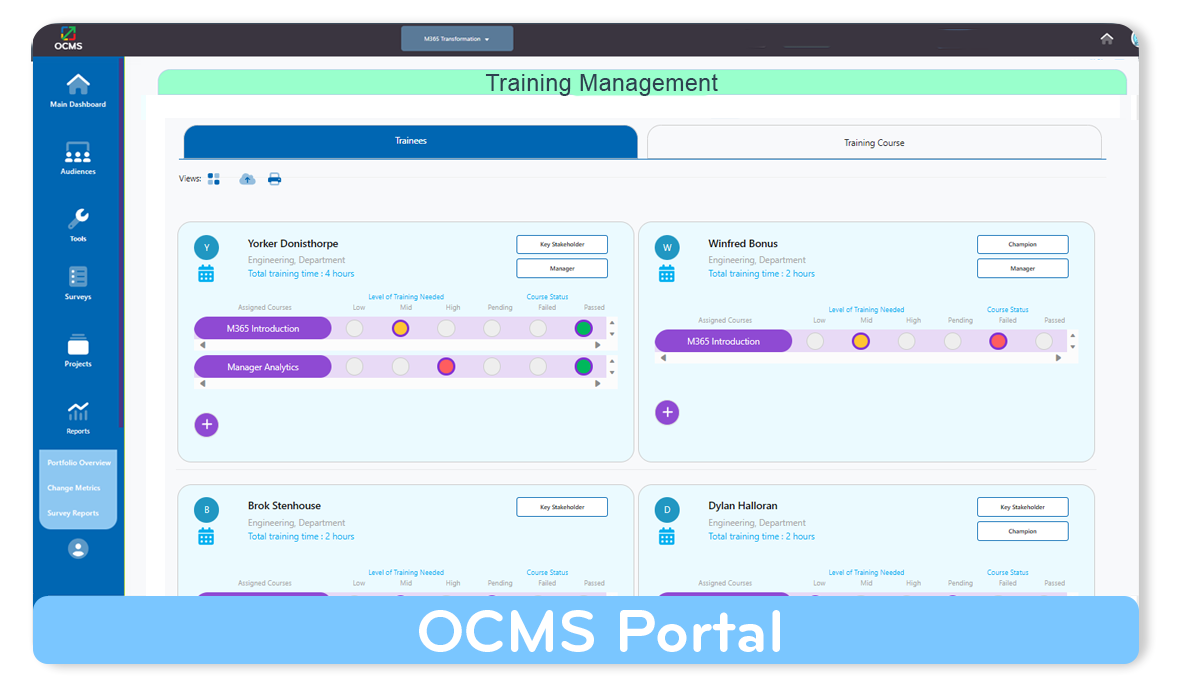
OCMS Portal is an all-in-one change management platform with excellent training needs analysis and training management tools. Start a free trial now to check it out (no credit card needed).
Do you know of another important purpose of training need assessment? Do you have information on the importance of training needs assessment that could help other training and OCM professionals? Please reach out and let us know. We’d love to hear from you!
Benefits of Training Needs Assessment | TNA Training Need Assessment Template Survey
Training Assessment Template Survey from OCMS Portal for conducting training needs analysis: OCMS Portals’ Training Management Tool for trainers, HR, and training teams.
The Importance of Training Needs Analysis for Effective Organizations & Projects
Now that we’ve reviewed the purpose of training needs analysis, let’s discuss why training need assessment is important.
One reason why training need analysis is important is because people can’t perform to their fullest if they lack the skills and knowledge needed. Companies that don’t understand the importance of training needs analysis may be confused as to why the organization isn’t performing better than it is.
In this example, they might even blame employees for not instinctively knowing what they need to do. But without proper training, teams do their best on their own, but they may be adopting inefficient processes simply because they were never trained on more effective workflows.
The importance of training needs assessment can also be seen in the area of data security. If employees are ignorant of how to detect phishing emails or the proper ways to handle sensitive customer information, they could inadvertently cause a data breach.
Training needs analysis benefits are also seen when it comes to projects that the organization is undertaking. If a project or OCM team is not using training need identification methods to determine whether or how much training may be needed to adopt a new solution, software, or process, the project could fail.
So, as you can see, the importance of training needs analysis permeates many different areas of an organization. It can be a driver for success in a wide variety of departments that have to do with employee skills and knowledge.
Do you have any questions about this article answering what is the purpose of a training needs analysis and what is the importance of training needs assessment? Reach out and let us know!
The OCMS Portal, with Training Management Tool is an all-in-one platform for change management, including training planning, management, and needs assessment.
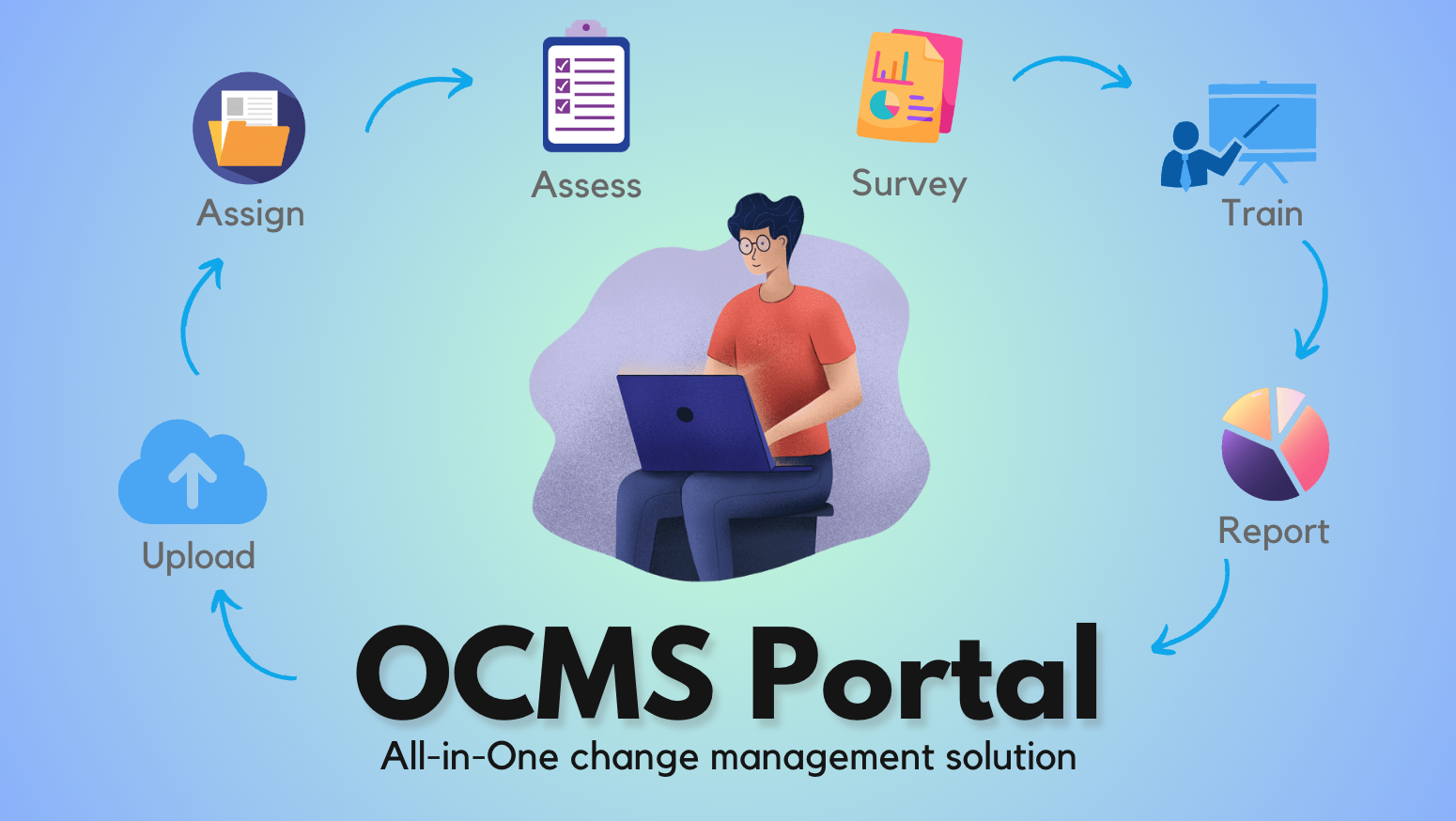
Training Need Identification Methods
You may understand the benefits of training needs assessment but need some guidance on how to identify training needs. Conducting training needs assessment is a multi-step process, and during that process, you’ll use a few different training need identification methods.
Ensuring that your organization gains all the benefits of training needs analysis requires understanding the various training need identification methods to use. You may also need to use more than one training need identification framework to ensure you fully understand all the training needs and skills and knowledge that may be lacking.
Remember, the purpose of training needs analysis is to help an organization or project meet performance and success goals. Thus, you will want to be thorough when conducting your assessment of employee skills.
Here are some of the standard training need identification methods:
- Send surveys to managers of groups being assessed
- Send surveys to employees
- Send surveys to other impacted end users
- Monitor Business Key Performance Indicators (KPIs)
- Directly observe daily workflow
- Employee skills testing/audit
- Monitoring of customer experience feedback
- FAQs and recurring questions
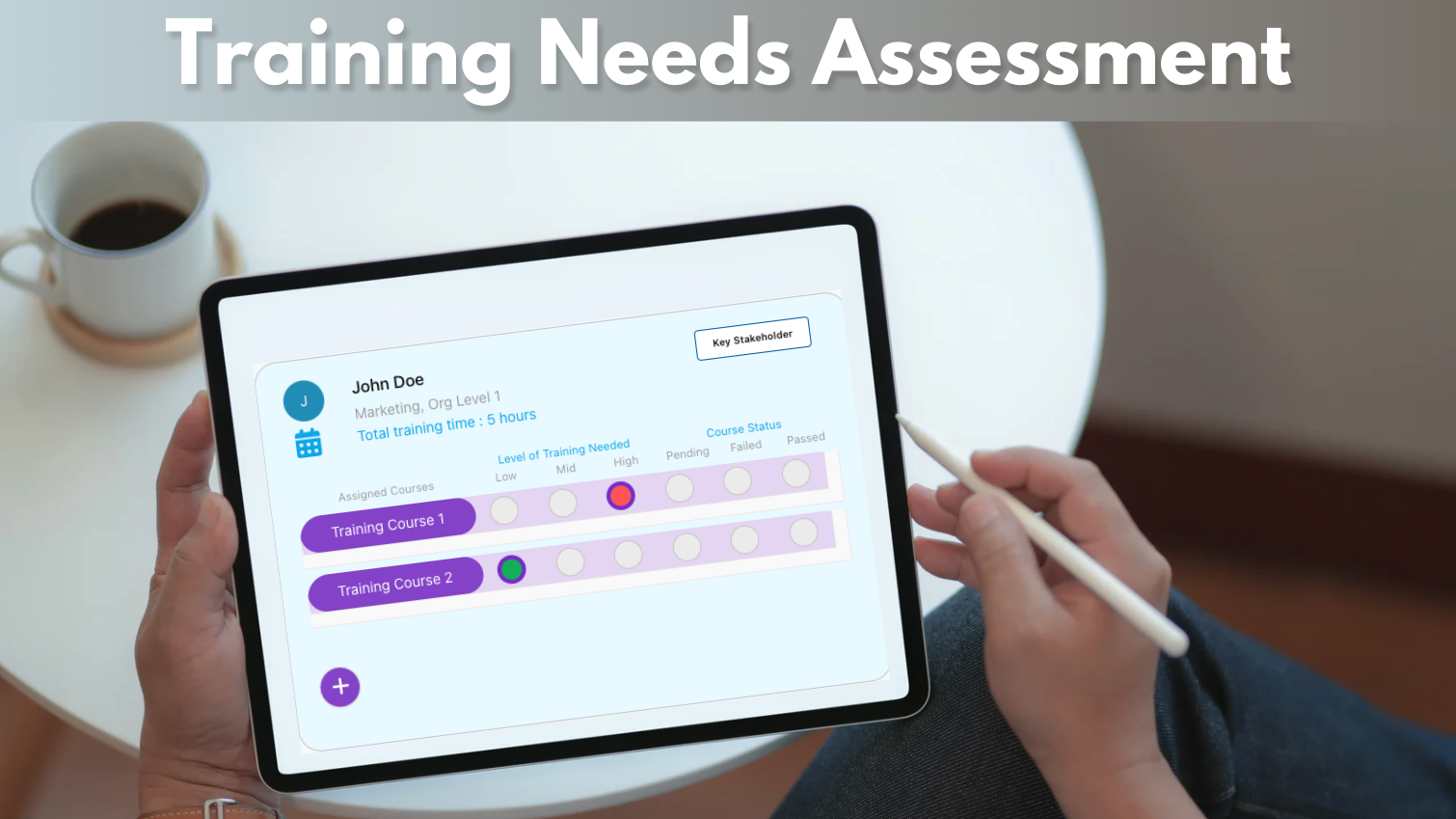
One of the benefits of training needs assessment using OCMS Portal’s Training Management Tool is that it comes with surveys for you to use. Once they are filled out, the results will populate automatically for you to see.
12 Training Needs Analysis Benefits
When you understand why training need assessment is important, it’s easier to explain training needs analysis benefits to others. There are multiple advantages to organizations and projects when having training teams assess employees for skills and knowledge gaps.
When emphasizing the importance of training needs assessment to project sponsors, OCM managers, change management practitioners, executives, other key leaders, or project stakeholders, here are several training needs analysis benefits you can mention.
Benefits of training needs analysis:
- Addresses skill and knowledge gaps in organizations
- Improves the effectiveness of training
- Helps ensure project solution adoption
- Makes organizations better because their employees have the knowledge they need
- Ensures continuous improvement and staff development
- Drives goal-oriented training
- Highlights training needs that were unknown before
- Reduces unnecessary training
- Assists in prioritizing training needs
- Improves employee job satisfaction
- Can correct problems in an organization
- Offers a proactive way to keep organizations productive
Do you know of additional benefits of training needs analysis that we should include here? Are there other points about the importance of training needs analysis we should touch on? If so, please let us know!
Tips for Conducting Training Needs Assessment
Once you understand the purpose of training need assessment and the importance of training needs analysis, it’s natural to next seek out tips to get you started.
We’ve put together a few workflow tips for you to leverage for efficient and effective TNA training needs assessment. When using best practices while conducting training needs assessment, you can gain even more benefits.
Multiply your training needs analysis benefits with these tips:
- Begin your training needs assessment by looking at organizational or project goals.
- Tie those organizational goals to knowledge and skills benchmarks.
- If using surveys as one of your training need identification methods, use a cloud-based survey tool to save time, such as Microsoft Forms or Survey Monkey.
- Include a question on your surveys to help you gauge trainees’ receptiveness to training (if they’re not receptive, you’ll need more engagement to win them over).
- Set up your training effectiveness KPIs ahead of time so you can report on training success.
- Leverage a training needs assessment and management template (like the OCMS Portal’s Training Management Tool).

If you have any questions about this article on the importance of training needs assessment or the purpose of training needs analysis, let us know. We’d love to hear from you!
OCMS Portal’s Tool for Training Management & Conducting Training Needs Assessment
OCMS Portal, the leading software for change management, includes multiple tools to conduct successful change initiatives. The platform’s Training Management Tool provides you with one place to handle all your training needs assessment, training planning, and deployment activities.
This is a powerful, yet easy-to-use cloud application that helps you achieve all the benefits of training needs analysis. Gain insight from training needs assessment reports, manage all your training in one place!
The OCMS Portal training management and training needs assessment tool includes:
- Add training courses & trainees easily
- Two views – Course view and Trainees view
- Free training templates, including a sample training curriculum template, sample training plan examples, and more.
- Build-in training needs assessment and training feedback surveys to save you time
- Auto-generated training plan and overall OCM plan
- The sample training plans are based on your training needs assessment.
Click below to start a free trial of OCMS Portal to begin enjoying all these benefits. There’s no credit card needed, and you’ll get instant access.
Conclusion – Why Training Need Assessment is Important
What is the purpose of training needs assessment? It’s to ensure your employees have the training and skills they need to help your organization achieve its operational goals.
Once you begin to see the benefits of training needs analysis, then the importance of this activity will become even more apparent.
We hope you’ve found this article on the importance of training needs assessment informative and helpful. If you have any other questions about the purpose of training needs analysis, please feel free to contact us anytime.
FAQ | The Importance of Training Needs Analysis
What is the purpose of training needs assessment?
The purpose of training needs analysis can vary in organizations. Ultimately, the overarching purpose of training need assessment is to ensure the organization can perform according to goals and expectations by ensuring its people have the knowledge and skills necessary.
What are the main benefits of training needs analysis?
The benefits of training needs assessment include:
1. Addresses skill and knowledge gaps in organizations
2. Improves the effectiveness of training
3. Helps ensure project solution adoption
4. Makes organizations better because their team has the knowledge they need
5. Ensures continuous improvement and staff development
6. Drives goal-oriented training
7. Highlights training needs that were unknown before
8. Reduces unnecessary training
9. Assists in prioritizing training needs
10. Improves employee job satisfaction
11. Can correct problems in an organization
12. Offers a proactive way to keep organizations productive
What are the steps in conducting training needs assessment?
Conducting training needs assessment involves six steps:
1. Determine the organization’s performance goals
2. Identify the skills/knowledge needed to meet goals
3. Conduct a skills/knowledge gap assessment
4. Determine recommended training solutions
5. Establish goal-oriented tracking metrics
6. Develop & present training recommendations
What is the importance of training needs analysis?
The importance of training needs analysis permeates many different areas of an organization. It can be a driver for success in a wide variety of areas that have to do with employee skills and knowledge. This includes project adoption, data security, organizational bottom-line KPIs, employee satisfaction, and much more.
Note: Content on OCM Solution's ocmsolution.com website is protected by copyright. Should you have any questions or comments regarding this OCM Solutions page, please reach out to Ogbe Airiodion (Change Management Lead) or the OCM Solutions Team today. OCM Solution was previously known as Airiodion Global Services (AGS).
External sources: stock.adobe.com,



